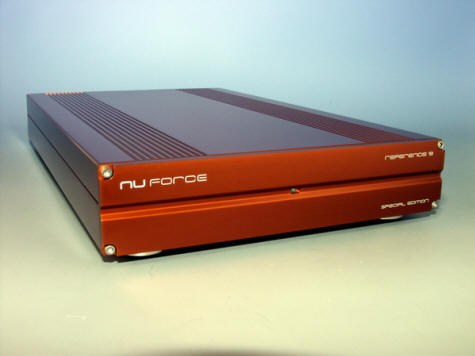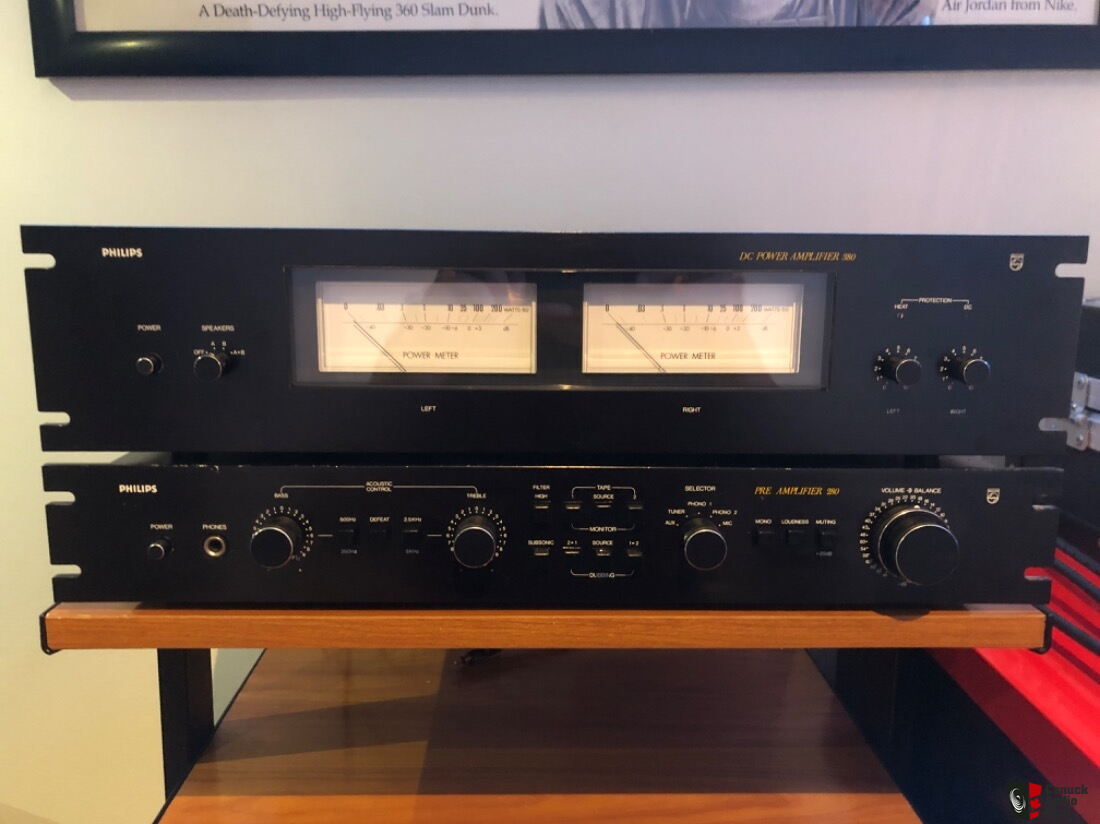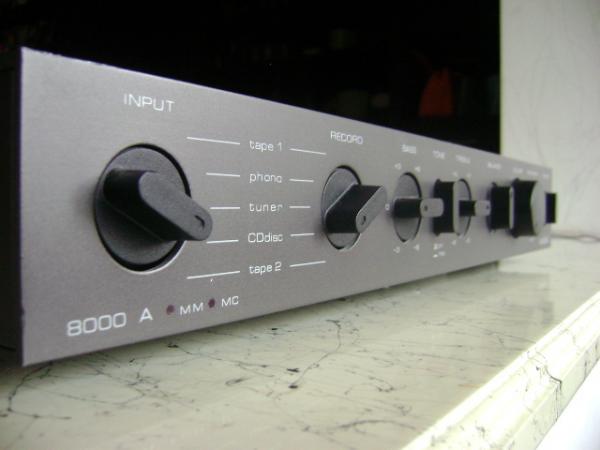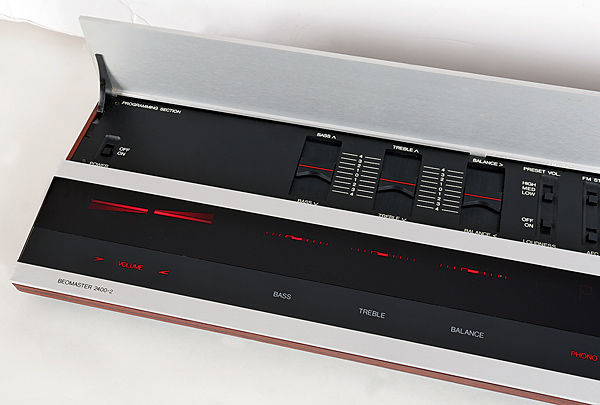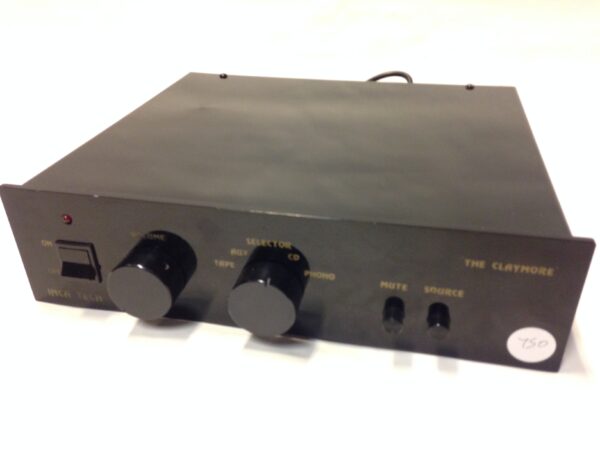California-based The Reference 8 and 9 monoblocs were NuForce’s first Class D amplifiers, which were introduced during the 2005 Consumer Electronics Show in Las Vegas. The £635 Reference 8 single-ended input (RCA) and £700 Reference 8b balanced input (providing a claimed 100W RMS) were available, as well as the £935 Reference 9 having balanced and single ended inputs (with 160W RMS). The 9SE mono block, which cost £1,550 and had specific interior componentry and wiring as well as a more complicated power supply, was released in the UK in 2008.
The striking burnt orange (“Rose Copper”) aluminium casework isn’t the only thing that sets this compact power amplifier apart. Inside is a novel variation on Class D amplification; the output waveform from the power amplifier is generated by a super high frequency PWM switching circuit, and the very low distortion is achieved by incorporating a local feedback integrator around the switching circuit to ensure that the average output voltage from each digital switching cycle is exactly equal to the reference (desired) output voltage. This, according to NuForce, eliminates the need for general negative feedback from the output of the filtering circuits to the loudspeaker load, which complicates feedback and reduces Class D amplifier bandwidth. It is stated that the lower component count improves overall energy efficiency over Class D and reduces heatsink and cooling requirements, as well as overall size and cost.
Because of the small size, it’s a tight fit inside, with surface mount circuit boards packed tightly together, a scattering of bespoke NuForce ICs, and NuForce audio-grade capacitors. The 9SE has a complex power supply with a large number of tiny capacitors (as opposed to two large caps on the standard, cheaper non-SE version). Improvements to the signal input section include improved quality input capacitors and the installation of premium 6-nines, oxygen-free copper input cabling, as well as a separate switching power supply for the analogue front end.
Considering its advertised 160W RMS power output, it’s rather little. An IEC power plug and an on/off switch are located on the back of the unit. Because of its low current demand, you can leave it on all the time if you choose, and the unit detects voltage automatically (from 84-264V). A pair of rhodium-plated copper speaker binding posts and a single Cardas phono input, as well as an XLR input, are included (complete with a microswitch to toggle between balanced and non-balanced operation). The brushed, anodized aluminium casework is mostly non-resonant and electrically screened, allowing the amps to be stacked on top of each other. The quality of the finish is outstanding.
If you like your power amplifiers to sound tight, clean, and open, this is a great choice. It’s effortlessly forceful and gracefully loud. Its tonality is even and balanced, if not a little soft, and it lacks the chromium-plated midband found in other Class AB designs. You wouldn’t call it velvety, as smooth as it is; it’s not in the business of warming up the sound or adding sumptuousness. The bass is taut and controlled, as well as reasonably tuneful. Everything is in its natural place, nailed to its proper location inside the recorded acoustic, in the midband, which is shockingly three dimensional with an architectural vibe. The clarity is excellent, with a large amount of musical information coming through quickly and rhythmically. Treble is no exception; when called upon, it’s smooth and silky, but when the situation calls for it, it’s forceful and atmospheric.
The NuForce isn’t exactly romantic to listen to; it won’t appeal to aficionados of parallel single-ended tube amplifiers, for example. However, in its own right, it’s a brilliantly neutral tool that can drive almost any loudspeaker with ease. Some people may dislike it because of its lack of ‘character,’ yet it gets on with the work at hand and does it well. When you turn it on, you won’t think it’s muscular, powerful, delicious, smooth, or anything else, and you won’t find a single vice. Whether you like it or not, the NuForce Reference 9SE is a music player.

